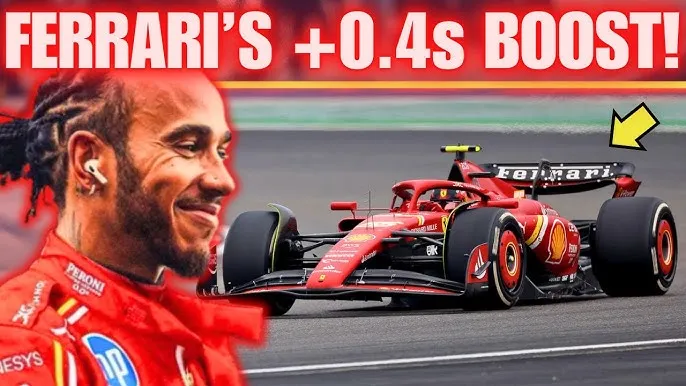The latest news coming from the world of Formula 1 has sent shockwaves through the motorsport community. Lewis Hamilton, one of the most successful drivers in the history of the sport, has been testing Ferrari’s SF-25, and the results are nothing short of extraordinary. This unexpected partnership has sparked significant interest, not only because of Hamilton’s incredible driving ability but also due to the potential ramifications it could have for the future of F1.

The SF-25, Ferrari’s latest Formula 1 car, has undergone extensive modifications for this season. While many have been skeptical about whether the car could challenge the dominant teams like Mercedes and Red Bull, Hamilton’s involvement in its testing has changed everything. The six-time world champion’s feedback on the car’s performance has brought to light the unique capabilities of Ferrari’s engineering, and the results of his tests are far beyond what anyone expected.

What stands out in Hamilton’s test results is his ability to extract maximum performance from the SF-25 despite the car being relatively new and unproven in compeтιтive conditions. His driving style, known for its smoothness and precision, aligns perfectly with the car’s characteristics, allowing him to push the boundaries of what was thought to be possible. The car showed remarkable pace and stability, and its handling proved to be more adaptable than anyone anticipated.
One of the most significant findings during the testing phase was the car’s exceptional balance, particularly in high-speed corners, where previous Ferrari models had struggled. Hamilton’s feedback has played a pivotal role in fine-tuning the aerodynamics and suspension systems, which now provide an improved level of downforce and stability. This breakthrough could be a game-changer for the Scuderia Ferrari team, as they’ve often been plagued by issues in these areas in the past.

Moreover, the SF-25’s power unit has also impressed Hamilton, with its refined engine performance delivering consistent power while maintaining fuel efficiency. This crucial aspect could give Ferrari an edge in the upcoming seasons, especially as teams continue to develop their engines for the new era of F1 regulations. The SF-25 seems poised to become a major contender, and Hamilton’s input has been invaluable in unlocking its full potential.
There is also speculation that Hamilton’s involvement with Ferrari could extend beyond just a testing role. Some insiders suggest that this could be the beginning of a significant collaboration between the driver and the team, potentially leading to an unprecedented move in his career. While nothing official has been confirmed, the relationship between Hamilton and Ferrari’s engineers seems to be one built on mutual respect and understanding. This new partnership could prove to be beneficial not just for Hamilton but for the entire F1 paddock.
The implications of Hamilton’s testing results for Ferrari go far beyond just a successful car. The feedback and data gathered from this collaboration could provide the team with invaluable insights that will allow them to adapt and refine their strategy for future seasons. With Hamilton’s vast experience and expertise, his role in the development of the SF-25 could push Ferrari closer to reclaiming their place at the top of the championship standings.
As the world watches closely, the potential shift in the balance of power within F1 is becoming clearer. If Ferrari can harness the lessons learned from Hamilton’s testing and incorporate them into their race strategy, they could pose a serious challenge to the current dominant teams. This marks the beginning of a new chapter in Formula 1, one where the future could be reshaped by the results of a single test session.





